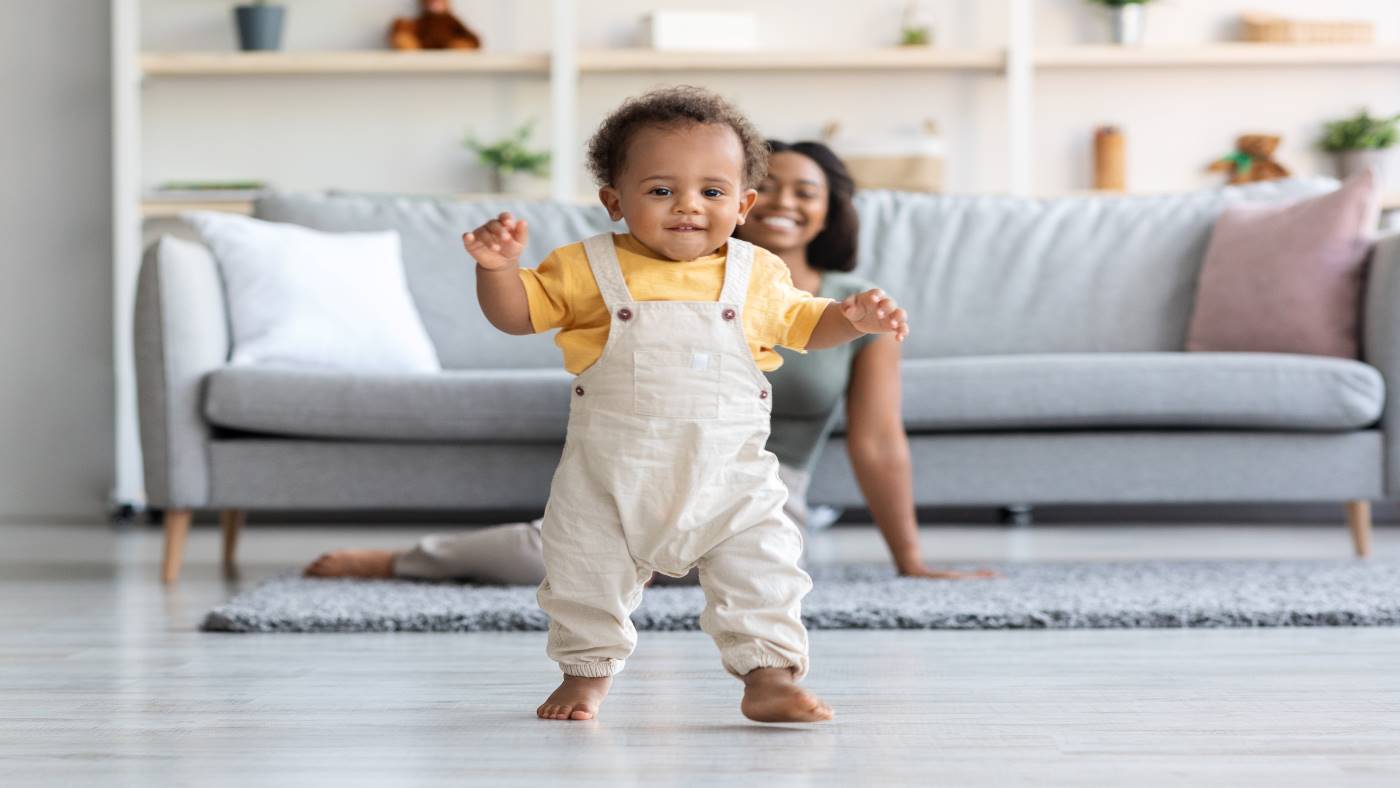How you can support your toddler to become a walker

When you watched your baby take their first wobbly steps, you’ll have understood why they are called toddlers! Becoming a confident walker involves not only getting stronger but also using information from the senses – so how do your toddler’s senses help them to walk?
From toddler to walker – how your toddler’s steps change
Those first steps look different to confident walking – your toddler steps slowly, legs wide apart, sometimes using their arms to provide a little extra balance.
As your toddler practises walking, you will notice the way they walk changes: their legs will not be as wide apart, their steps will be quicker and more confident and, unless they come across some bumpy ground, they won’t use their arms to balance.
Why you might notice your toddler making themselves dizzy
As adults we tend to be aware of our sense of balance when it is challenged – so if you’re dancing with your toddler you know when you need to spin the other way for a while so you don’t feel dizzy!
Toddlers learn to train their balance system – and part of doing this is making themselves dizzy and then correcting this feeling.
You might notice your toddler put their head on the floor and then come up again and be a bit wobbly – or they might enjoy rocking and spinning.
How your toddler combines information from their senses to become a confident walker
As your toddler walks, they bring together information from their balance system, vision and body to understand their position and adjust to stay upright.
We all do this, but sometimes toddlers can’t quite judge the adjustments they need to make and might move too far and fall or wobble.
Helping your toddler to walk with confidence
Does this mean you need to find ways to stimulate your toddler’s senses as they walk? The answer is yes – but you’re probably already doing what you need to do!
Our top five ideas for building a confident walker
- Give them as much time and space to walk as you can (this might make getting from A to B a bit slower for a little while!)
- Let them walk barefoot when possible – walking barefoot can give your toddler a bit more information about their body position, which helps them adjust their movements.
- Swapping from walking to crawling is fine – when your baby is first walking, they might find sometimes that they can get where they need to a bit quicker by crawling. This is fine, don’t feel you need to stop them, walking is hard work so they might want a break every now and then.
- Play games involving bouncing, rocking, swinging and spinning (gently) – bouncing, rocking, spinning and swinging will all help your baby to develop their balance and help them walk steadily.
- Give them time playing on the floor – don't feel your toddler needs to sit at a table when they play. Floor play is great for building strength in their core muscles and giving them space to move, so keep the table for mealtimes!